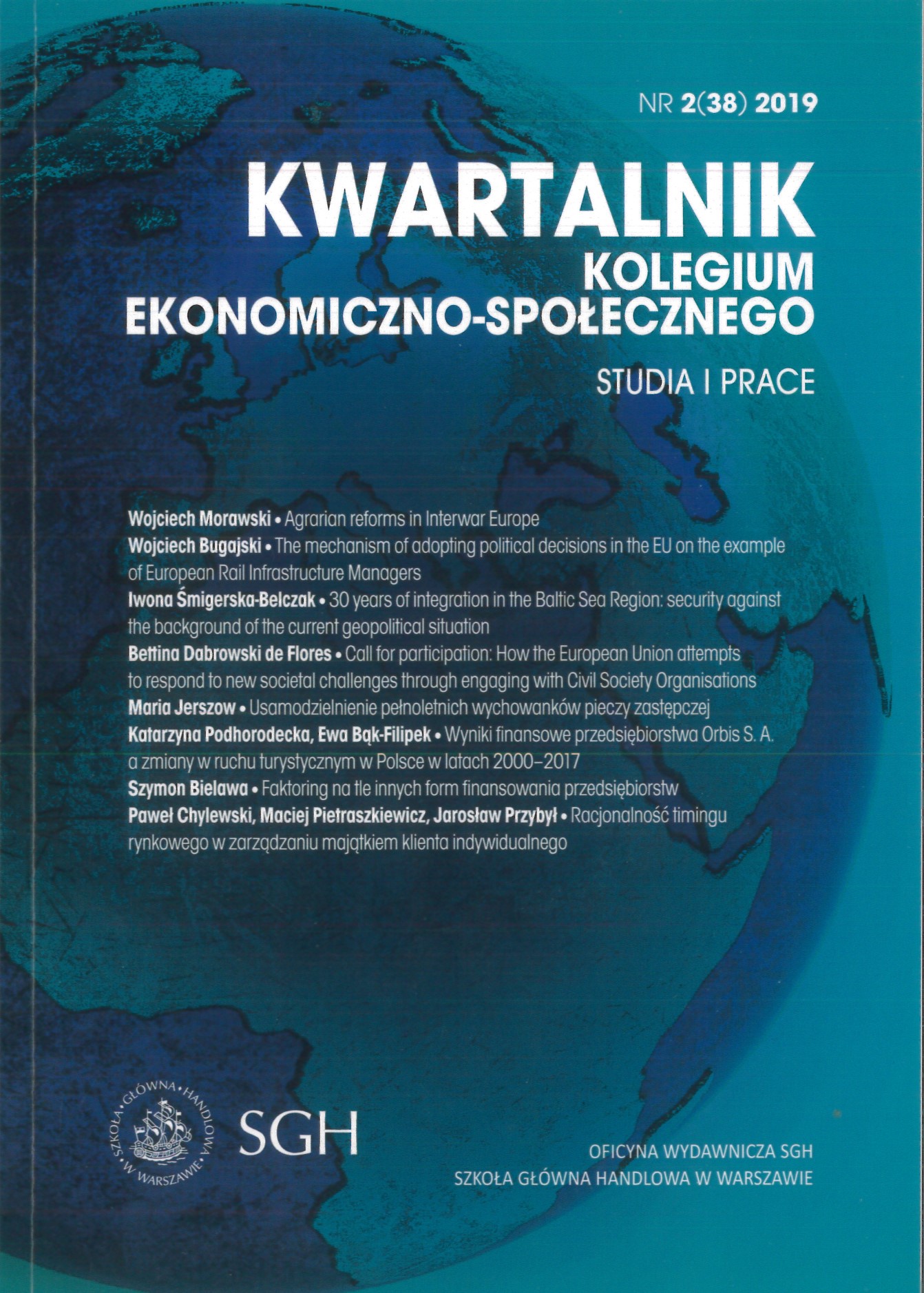Zmìna u čiselʹnostì, zajnâtostì ta etnokonfesìjnomu skladìpìd priêmcìv-promislovcìv m. Lʹvova u mìžvoênnij perìod(za danimi perepisìv 1921 ì 1931 r.)
Main Article Content
Abstrakt
Entrepreneurs made up about a quarter of the burghers involved in the industry of the interwar Lviv. However, a vast majority of them were the owners of small workshops, large entrepreneurs accounted for less than 5% of this social class. But the small and medium-sized businesses dominated among the factories' owners. During the interwar period, the quantity of entrepreneurs decreased among the persons involved in the city's industry. There was also a tendency to reduce the use of the hired labour by them. The employment structure of the Lviv entrepreneurs during the 1920s-1930s did not change significantly, but it varied depending on the size of the share capital. A vast majority of the small artisans were employed in the sewing and haberdashery, food, construction, woodworking and metalworking industries, while the owners of large enterprises invested their capital in the food, printing, mineral, wood and paper industries. From the ethnic and denomination point of view, the Lviv entrepreneurs were dominated by two groups: Poles (Roman Catholics) and Jews, while Ukrainians (Greek Catholics) and the representatives of other nationalities accounted for a small percentage. However, during the years 1921-1931 they showed a rapid growth rate.(original abstract)
Downloads
Article Details
Autor (Autorzy) artykułu oświadcza, że przesłane opracowanie nie narusza praw autorskich osób trzecich. Wyraża zgodę na poddanie artykułu procedurze recenzji oraz dokonanie zmian redakcyjnych. Przenosi nieodpłatnie na Oficynę Wydawniczą SGH autorskie prawa majątkowe do utworu na polach eksploatacji wymienionych w art. 50 Ustawy z dnia 4 lutego 1994 r. o prawie autorskim i prawach pokrewnych – pod warunkiem, że praca została zaakceptowana do publikacji i opublikowana.
Oficyna Wydawnicza SGH posiada autorskie prawa majątkowe do wszystkich treści czasopisma. Zamieszczenie tekstu artykuły w repozytorium, na stronie domowej autora lub na innej stronie jest dozwolone o ile nie wiąże się z pozyskiwaniem korzyści majątkowych, a tekst wyposażony będzie w informacje źródłowe (w tym również tytuł, rok, numer i adres internetowy czasopisma).
Osoby zainteresowane komercyjnym wykorzystaniem zawartości czasopisma proszone są o kontakt z Redakcją.
Bibliografia
2. Drexler I., Wielki Lwów, Lwów 1920.
3. Landau Z., Tomaszewski J., Trudna niepodległość: Rozważania o gospodarce Polski 1918-1939, Książka i Wiedza, Warszawa 1978.
4. Statystyka Polski. Seria C. Drugi powszechny spis ludności z dnia 9. XII.1931 r. Mieszkania i gospodarstwa domowe. Ludność. Stosunki zawodowe. Miasto Lwów, Warszawa 1937, z. 58.
5. Wiadomości statystyczne o mieście Lwowie 1923-1925, Lwów 1928.
6. Гелей С., Економіка, [в:] Історія Львова, ред. Ісаєвич Я., Центр Європи, Львів 2007, т. 2.
7. Драк М., Фірма Бачевських у Львові і розвиток лікерогорілчаної промисловості в Галичині (1782-1939), ПП Сорока, Львів 2004.
8. Дудяк О., Львівські підприємці за даними перепису 1931 р.: чисельність, етно-конфесійна структура, галузь зайнятості, Вісник львівського університету, серія історична, вип. 48, Львів 2013.
9. Думанська О. та ін., Іван Тиктор: талан і талант, Українська академія друкарства, Львів 2007.
10. Зайцев О., Макарчук С., Населення міста, [в:] Історія Львова, ред. Ісаєвич Я., Центр Європи, Львів 2007, т. 3.
11. Зашкільняк Л., Крикун М., Історія Польщі: від найдавніших часів до наших днів, Львівський національний університет імені Івана Франка, Львів 2002.
12. Кісь Я., Промисловість Львова у період феодалізму, В-во Львівського універ-ситету, Львів, 1968.
13. Коцюбанська О., Клементина Авдикович-Глинська - видатна постать кондитерської промисловості України 20-х років XX ст., Українознавство, No 1, 2010.
14. Нариси історії Львова, ред. Крип'якевич І., Книжково-журнальне видавництво, Львів 1956.
15. Нога О., Іван Левинський: художник, архітектор, промисловець, педагог, гро-мадський діяч, Основа, Львів 1993.
16. Пасіцька О., Львів і львів'яни: український соціум та промисел (20-30-ті роки XX ст.), Інститут українознавства ім. І. Крип'якевича НАН України, Львів 2014.
